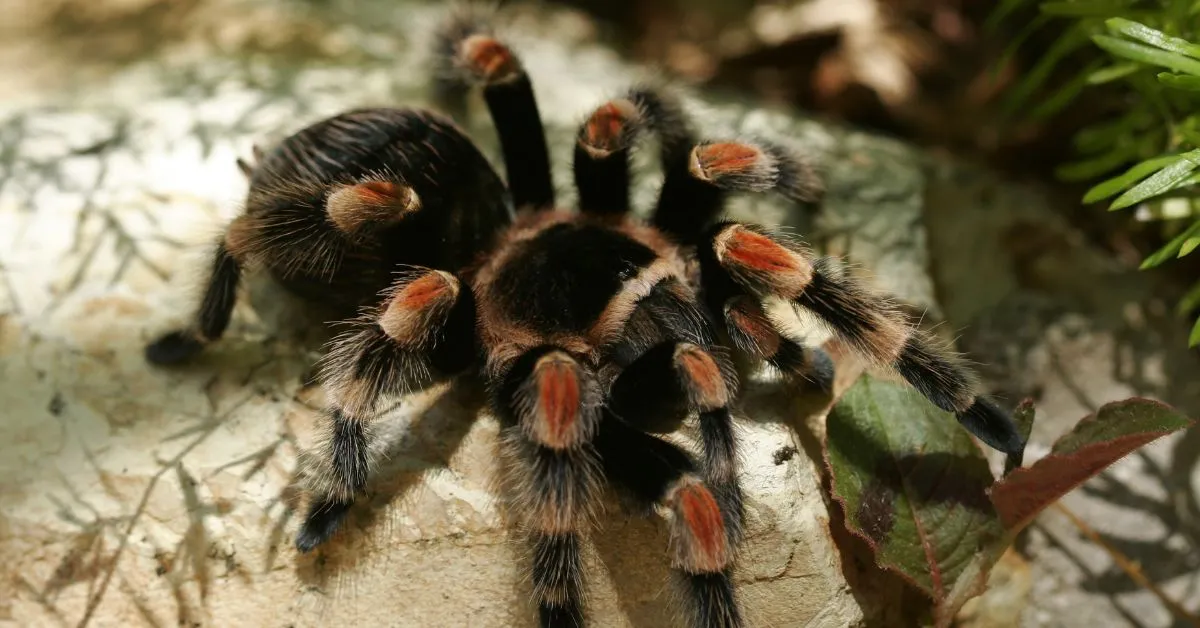Mexican Red Knee Tarantula: 5 Fascinating Facts
The Mexican Red Knee Tarantula, scientifically known as Brachypelma hamorii, is a captivating species that has fascinated arachnid enthusiasts for decades. Known for its striking appearance and relatively docile nature, this tarantula has become a popular pet. Beyond its visual appeal, the Mexican Red Knee Tarantula boasts a rich life history filled with intriguing facts about its behavior, habitat, and conservation status. This article delves into five fascinating facts about this iconic species, providing a comprehensive understanding of its unique characteristics and the importance of its preservation. From its distinctive red markings to its preferred habitat, we will explore the key aspects of the Mexican Red Knee Tarantula’s life, highlighting what makes it such a remarkable creature.
Appearance and Characteristics
The Mexican Red Knee Tarantula’s appearance is one of its most defining features, immediately capturing the attention of anyone who sees it. Its coloration and physical attributes contribute to its overall appeal and also play a vital role in its survival in the wild. The contrast between the black body and the vibrant red or orange markings on its legs creates a stunning visual display. The carapace, or the top part of the cephalothorax, is generally black or dark brown, providing a strong contrast to the colorful legs. These characteristics make the Mexican Red Knee Tarantula easily identifiable and also serve as a warning signal to potential predators. The careful observer will appreciate the intricate details of this species, making it a truly remarkable creature.
Distinctive Red Knees
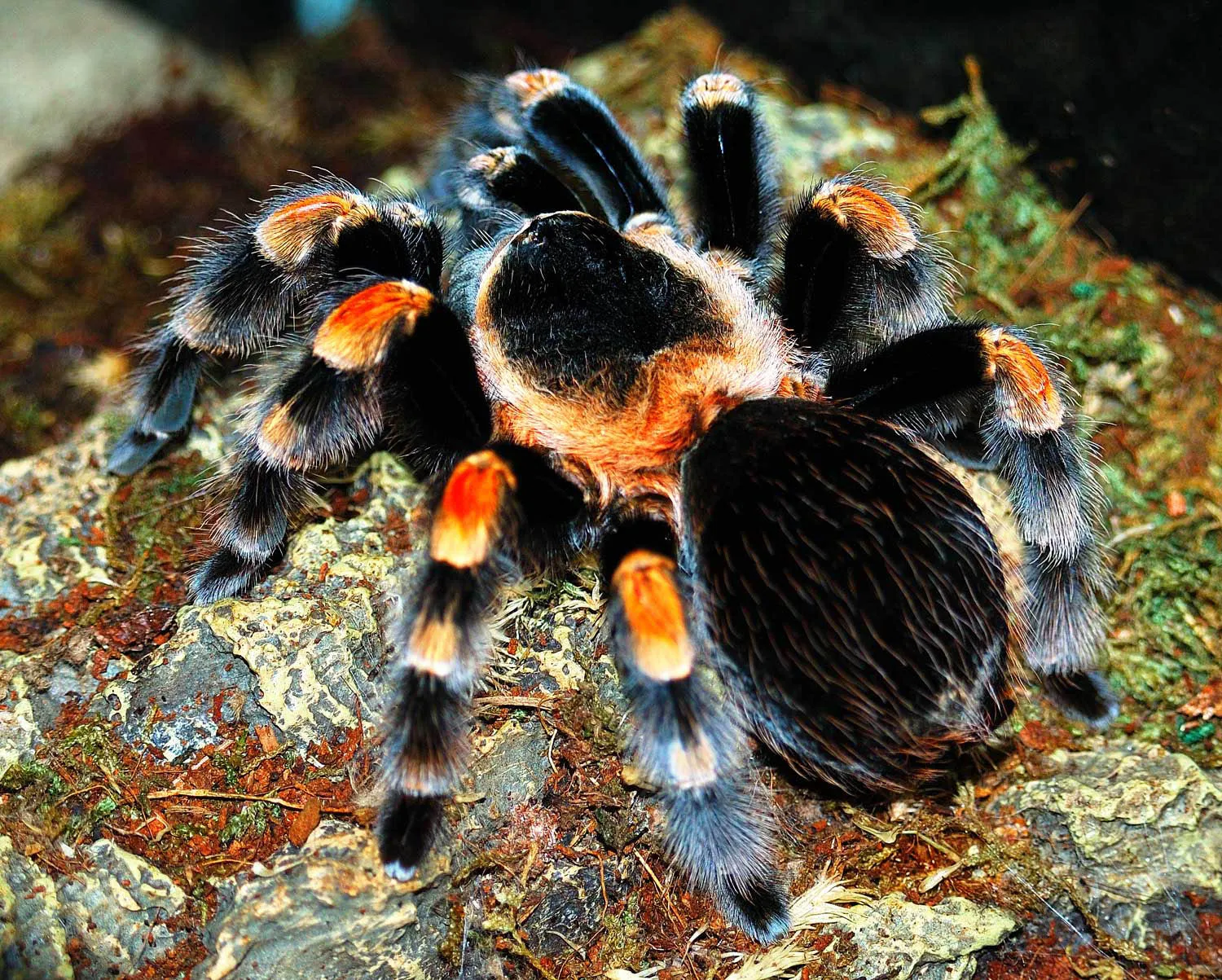
The most recognizable feature of the Mexican Red Knee Tarantula is, undoubtedly, its vibrant red or orange markings on the leg joints, commonly referred to as “knees.” These striking colors serve as a warning signal, indicating to potential predators that the tarantula possesses urticating hairs, which can cause irritation. These hairs are barbed and are flicked off the abdomen as a defense mechanism. The intensity of the red coloration can vary between individuals, but the vibrancy remains a key identifier. The red “knees” also play a role in camouflage within the tarantula’s natural habitat, blending in with the reddish soils and dry vegetation found in its native environment, helping it evade predators and ambush prey.
Size and Lifespan
Mexican Red Knee Tarantulas are relatively large spiders, with females generally growing larger than males. The average body length of a female can reach up to 6 inches (15 cm), with a leg span of up to 6 inches (15 cm). Males are typically smaller, with a slightly shorter lifespan. The lifespan of these tarantulas is another remarkable characteristic. Females can live for an impressive 20 to 25 years, sometimes even longer under optimal conditions, making them a long-term commitment for pet owners. Males, on the other hand, have a shorter lifespan, usually only living for about 5 to 10 years. This difference in lifespan is a significant factor when considering the care and long-term needs of the species.
Geographical Range and Habitat
Understanding the geographical range and preferred habitats of the Mexican Red Knee Tarantula is crucial to appreciate its adaptation to its environment. The species is endemic to the Pacific coast of Mexico, and it has a specific distribution within this region. This confined range makes them particularly susceptible to habitat loss and environmental changes. Their survival depends on the preservation of their natural environment. The tarantula’s habitat preferences dictate the conditions under which it thrives, and awareness of these preferences aids in conservation efforts. Protecting their natural environment is vital for the survival of this species.
Native Regions
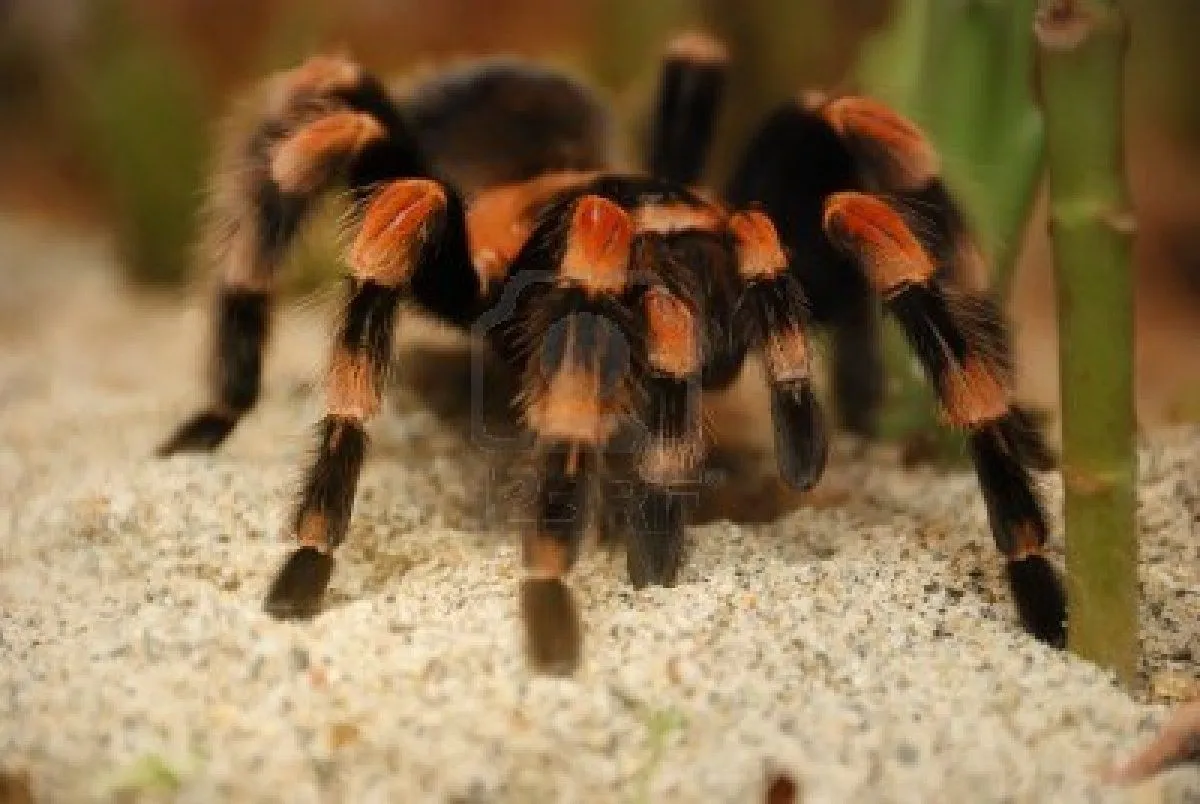
The Mexican Red Knee Tarantula is primarily found in the western regions of Mexico. Its native range includes the states of Guerrero and Michoacán, where it inhabits specific types of environments. These states provide the necessary conditions for the tarantula to thrive, including suitable climates and access to prey. The species’ distribution within these states is often localized, and populations can be found in specific areas with the right environmental characteristics. The limited native range makes the species susceptible to environmental pressures and underscores the importance of conserving its habitat within these areas. The range map shows this distribution.
Preferred Habitats
Mexican Red Knee Tarantulas prefer dry scrublands, tropical deciduous forests, and burrows underground. They create burrows in the ground, often under rocks or near the base of trees, providing shelter from the sun and a safe place to hide from predators. The soil composition is also important, as they prefer slightly humid soil conditions. These tarantulas are well-adapted to arid environments, seeking out cooler, more humid microclimates within their burrows. The presence of rocks, shrubs, and other vegetation provides the necessary cover for both hunting and avoiding predators. The tarantula’s survival depends on a combination of these environmental elements.
Behavior and Lifestyle
The behavior and lifestyle of the Mexican Red Knee Tarantula offer insights into its survival strategies and daily routines. This tarantula is primarily nocturnal, spending most of its time in its burrow during the day and emerging at night to hunt. This behavior helps it avoid extreme temperatures and predators. Understanding their diet and defense mechanisms is vital to understanding their behavior. Their behavior is shaped by their environment, and adapting to the challenges they face is key to their survival.
Diet and Feeding Habits
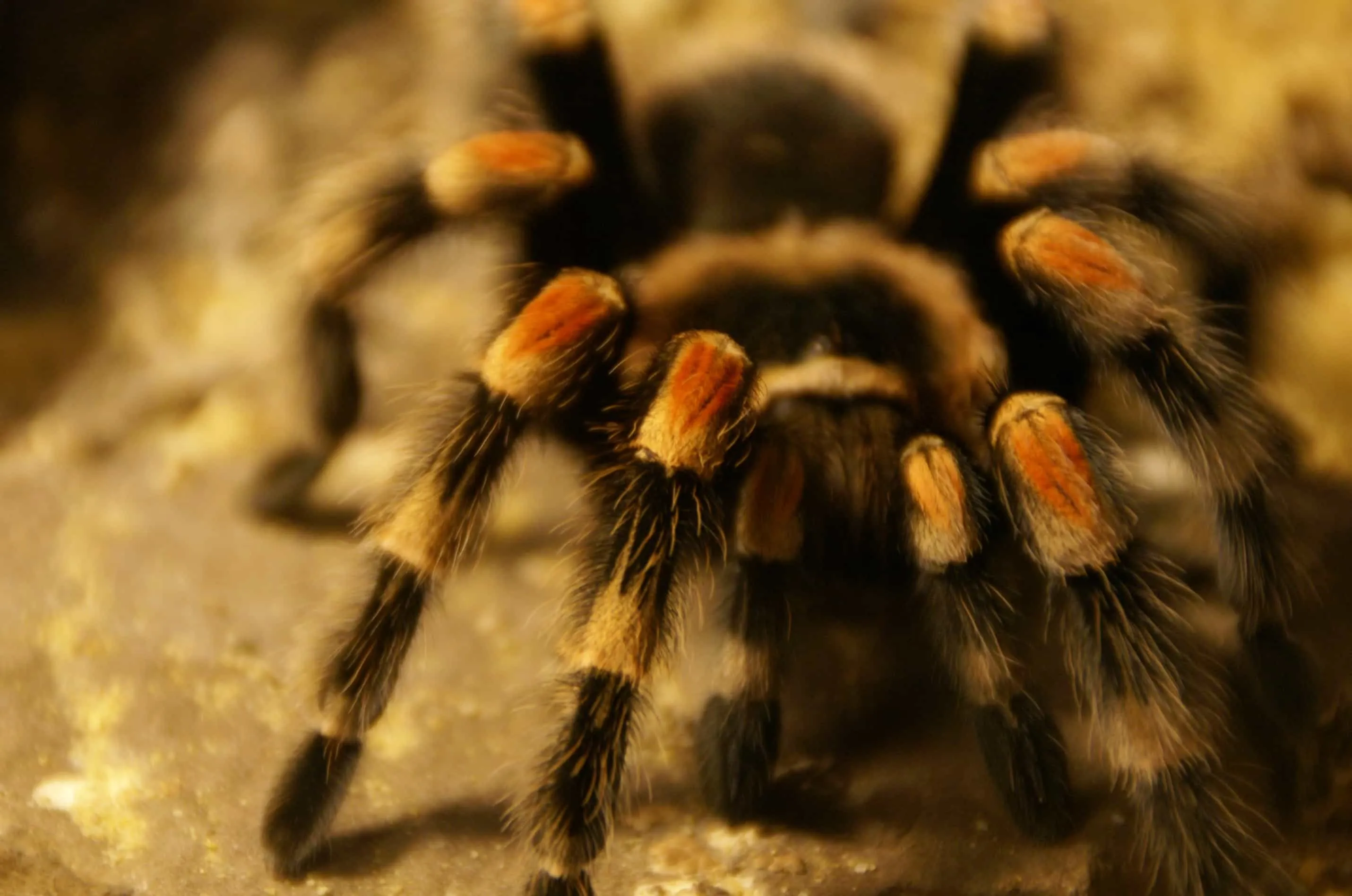
Mexican Red Knee Tarantulas are carnivorous, feeding on insects, small invertebrates, and occasionally small vertebrates in the wild. Their diet primarily consists of crickets, mealworms, and other readily available prey. In captivity, pet owners often feed them a variety of insects, providing a balanced diet that meets their nutritional needs. The tarantulas are ambush predators, waiting patiently in or near their burrows until prey comes within reach. They then quickly strike, injecting venom to immobilize their prey. They use chelicerae, or fangs, to pierce their prey, and digestive enzymes break down the food before they consume it. The Mexican Red Knee Tarantula is a patient hunter, and its diet reflects its survival strategy.
Defensive Mechanisms
Mexican Red Knee Tarantulas have several defensive mechanisms to protect themselves from predators. The most well-known of these is their ability to flick urticating hairs from their abdomen. These hairs, when disturbed, can cause irritation and itchiness to potential threats. They also possess fangs and venom for defense, injecting venom when threatened, though their venom is not considered highly dangerous to humans. Their behavior is usually docile, but when they feel threatened, they will not hesitate to defend themselves. The threat display can include raising their front legs, displaying fangs, and hissing. These defensive strategies ensure their survival.
Conservation Status
The conservation status of the Mexican Red Knee Tarantula is a critical consideration, given the pressures it faces in its natural habitat. Assessing the threats to its survival and implementing conservation efforts are crucial to ensuring the species’ long-term survival. The decline in their population is a serious issue and is something that many conservationists are working to fix. It is important to understand the factors threatening their survival and how their habitat loss is affecting the species.
Threats to Survival
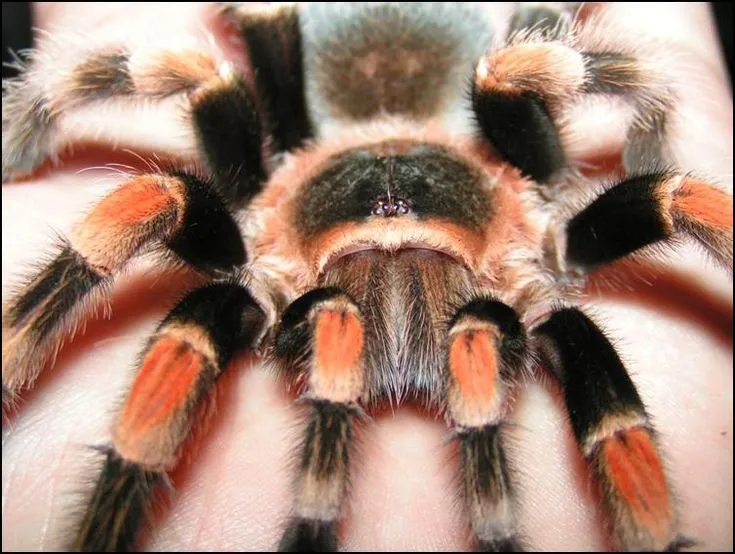
The Mexican Red Knee Tarantula faces several threats, including habitat loss due to deforestation and urbanization, and the pet trade. As human populations expand, the habitats that the tarantulas depend on are destroyed, directly impacting their survival. Overcollection for the pet trade also affects wild populations, with many individuals being removed from their natural habitats. Climate change presents additional challenges, as changes in temperature and rainfall patterns can affect the availability of food and suitable living conditions. Understanding these threats is essential for developing effective conservation strategies and saving the species.
Conservation Efforts
Various conservation efforts are underway to protect the Mexican Red Knee Tarantula. These efforts include habitat protection, captive breeding programs, and sustainable pet trade practices. Preserving the natural habitats through the creation of protected areas is critical for the survival of the species. Captive breeding programs help to bolster populations and reduce the pressure on wild populations. The sustainable pet trade practices ensure that the individuals are ethically sourced and that collection does not negatively impact wild populations. Educating the public about the importance of conservation and supporting conservation organizations helps raise awareness and encourages responsible practices.
Interesting Facts
Beyond the core aspects of their appearance, habitat, and conservation, the Mexican Red Knee Tarantula offers various other interesting facts. These facts reveal the fascinating aspects of its life cycle and interactions with its environment. These details contribute to our understanding of this species and its uniqueness. From molting to the effects of their venom, these facts add to the appreciation of these amazing creatures.
Molting Process

Like all tarantulas, the Mexican Red Knee Tarantula molts to grow and shed its exoskeleton. Molting involves the tarantula shedding its entire outer layer, including the lining of its trachea and gut. This process allows the tarantula to grow and replace damaged or worn body parts. Before molting, the tarantula typically becomes inactive, stops eating, and may construct a silken mat. The molting process is a vulnerable time for the tarantula, as it is soft and defenseless. The newly molted tarantula is significantly lighter in color. The entire process can take several hours, and the tarantula’s survival depends on completing it successfully.
Venom and Its Effects
The Mexican Red Knee Tarantula’s venom is not considered highly dangerous to humans, but it can cause localized pain, muscle cramps, and irritation. The severity of the reaction depends on the individual and the amount of venom injected. The venom is primarily used to immobilize prey. Although bites from this species are rare, it is essential to be aware of the potential effects. The treatment typically involves cleaning the bite area and applying an ice pack to reduce swelling and pain. Allergic reactions are extremely rare, but anyone experiencing severe symptoms should seek medical attention. Understanding these facts provides insight into the tarantula’s defensive capabilities.
